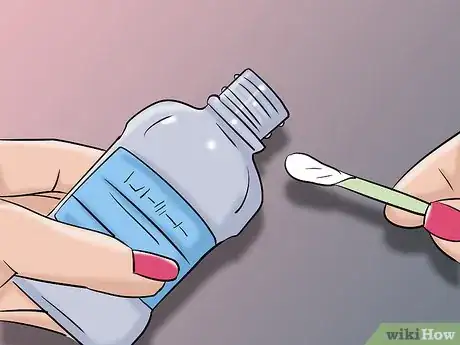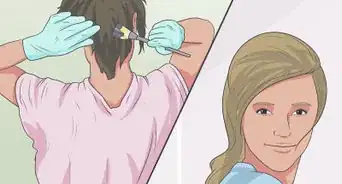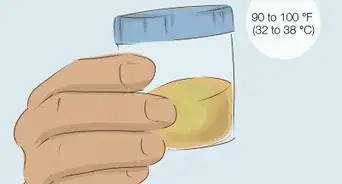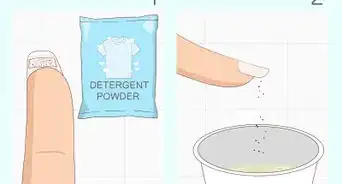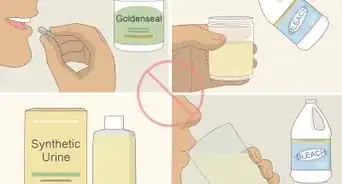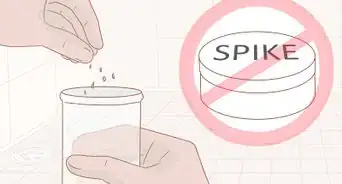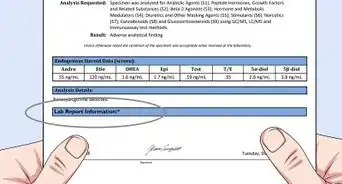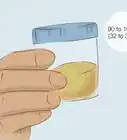This article was co-authored by wikiHow Staff. Our trained team of editors and researchers validate articles for accuracy and comprehensiveness. wikiHow's Content Management Team carefully monitors the work from our editorial staff to ensure that each article is backed by trusted research and meets our high quality standards.
There are 7 references cited in this article, which can be found at the bottom of the page.
This article has been viewed 33,581 times.
Learn more...
A drug test can detect whether drugs are in someone's system. This can be helpful when monitoring a drug addicted family member or as a method of screening potential job applicants. The three most popular methods for drug tests are saliva, urine, and hair tests. If you make a sound plan and follow the instructions carefully, you can administer a drug test to someone and see if they have been using drugs recently.
Steps
Choosing the Right Test
-
1Use laboratory testing to drug test employees. Laboratory tests require the patient to go to a specialized facility. Lab tests are more accurate than take-home tests and are what you should use if you plan on drug screening employees or job applicants.
- In a laboratory setting, there will be less of a chance of sample tampering.
- Drug tests that evaluate hair and saliva will usually have to be sent to a lab.
-
2Purchase a home drug test for family and friends. You can purchase home drug tests online or at a pharmacy or online. These tests are easier to use and will give you the results quickly. Take home drug testing is often cheaper than lab drug tests.Advertisement
-
3Use a saliva test to test for drug use within the last couple of days. Saliva tests are less intrusive than hair or urine tests but will only detect drugs taken over the last couple of days. They are also most effective to detect drugs that have been consumed over the last couple of hours. Saliva drug tests are the best test to administer immediately after an accident.[1]
-
4Select a urine test to test for drugs within the last couple of weeks. A urine test is the least expensive type of test and typically catches drugs that were taken within the last couple of weeks. Urine tests will not, however, detect drugs taken within the last four hours. Choose a urine test if you suspect that there's been drug use over the course of the last month.[2]
-
5Pick a hair test to test for drugs taken over the last couple of months. Hair tests go back three months and will still read positive if the person just recently started abstaining from drug use. Select this test if you want to determine whether the person has been using drugs for the last couple of months.[3]
-
6Determine what will happen if they don't pass the test. If you're testing a friend or family member, think of ways that you can help rehabilitate the person taking the drugs. If drug use is found, there should be a therapy plan in place that can help them overcome the habit. This may be a combination of psychotherapy or a drug rehabilitation program. If you are screening employees or potential employees, speak with your human resources department and come up with the proper punishment for failing the test.
- Be ready to sit down and talk with the person about the results of their test.
- Regardless of what you decide to do after they fail, make sure that you stick to the plan no matter what.
-
7Consult with HR if you're using a drug test for employment. There are various state and local guidelines and regulations if you plan on screening applicants or employees of drugs. Many states require employers to use a state-certified lab for drug testing while others require the employer to inform the applicant of the drug screening before offering them the job. Refer to your human resources department to ensure that your testing meets all of these legal guidelines.[4]
- Some states require the company to give a job offer before they can drug screen an applicant.
Administering a Home Urine Test
-
1Narrow down the drugs that you want to test for. Some home tests will only test for specific drugs, while others will test for a variety of drugs. Read the label on the test you're planning on buying and make sure that it tests for the drug that you suspect they use.[5]
- Cannabinoid tests are made to detect drugs like marijuana and hash.
- Opiate tests will detect drugs such as heroin, opium, codeine, and morphine.
- There are also tests made specifically to detect cocaine and amphetamines.
-
2Read the instructions on the test. Before you start the test, make sure to thoroughly read the instructions and warnings that came with it. While these instructions work for most take home urine drug tests, the one that you purchase could be slightly different.
-
3Have the person urinate in a cup. Often, the test will come with its own specimen cup that the test taker can fill up. If not, the test taker should fill a disposable cup halfway.[6]
-
4Stand near the person while they take the test to prevent tampering. You can stand on the other side of the door, or you can stand in the room with your back facing the person taking the test if you're worried that they will tamper with the sample. Adding chemicals to the test can produce inaccurate results, so you want to make sure that they aren't adding anything to their sample.[7]
-
5Remove the cap on the test card. Make sure that the test strip was sitting at room temperature before removing it from its packaging. Remove the plastic cap on the bottom of the test strip to reveal downward pointing arrows on the bottom of the test card.
-
6Submerge the card into the urine, up to the line. Dip the test card into the urine, arrows facing down. There will usually be a line on the card that designates how deep you should dip the card. Keep the strip in the urine for 10 seconds, then pull it out and let it rest on a non-absorbant surface. Don't let the urine go over the designated line on the strip or it will affect your results.
- Wear gloves to prevent urine from getting on your hands.
- Some tests will have a test strip attached to a cap that covers the specimen cup. If you have this sort of test, screw the top back onto the cup securely, then tip it over so that the urine spreads onto the test strip in the cap.
-
7Wait for five minutes and then read the results. There should be two areas labeled C and T. C stands for the control region while the T represents the current test sample. If there is a line on the T area, it means that the test is negative. If there is no line in the T area, that means that the test is positive for drug use. If the C region doesn't have a line, that means that the sample is invalid, and the person should retake the test.[8]
- The line for the T area may be faint, but any line at all means that it was a negative test.
Performing a Saliva Test
-
1Place the absorbent tip in between their teeth and gums. Saliva tests typically look like a cotton swab with a long applicator handle. Hold the applicator handle on the saliva test and place the absorbent end of the test in between their teeth and gums on either the top or bottom of their mouth.
-
2Hold the test in their mouth. Hold the tip against their gums for five minutes, or until the absorbent end is saturated.
-
3Seal the specimen and send it to the lab. Place the saliva test into a test tube and snap off the plastic applicator handle. Seal the specimen in the tube and send it to the lab to be tested. Typically, the results will be available within 24 hours.[9]
- The packaging on the test will have the address for the lab where you need to send it.
Doing a Hair Test
-
1Cut a 1.5-inch lock of hair from the person's head. Grab around 40-60 strands of hair and twist them in your hand. Around 1.5 inches or 40+ mgs are required for most hair tests. Use a scissor to cut away the lock of hair.[10]
-
2Cut back, arm, or leg hair if they don't have hair on their head. Hair from other parts of the area, excluding pubic hair, can be gathered together to make up the minimum amount of hair that's needed for a test.
-
3Put the hair in the specimen tube or test tube. Put the hair sample in a test tube and seal it. It's important that the container is air tight and doesn't contain any chemicals that would alter the results of the test.
-
4Send the sample to a laboratory for testing. If you purchased the test, it will include the address of the lab that you need to send it to. If you're getting a sample of hair yourself, make sure to contact a drug testing facility near you to make sure they accept hair samples. Send the hair off to a lab so that they can analyze it. Results will usually be available within a week.[13]
References
- ↑ https://erowid.org/psychoactives/testing/testing_info1.shtml
- ↑ https://erowid.org/psychoactives/testing/testing_info1.shtml
- ↑ https://erowid.org/psychoactives/testing/testing_info1.shtml
- ↑ http://www.nolo.com/legal-encyclopedia/free-books/employee-rights-book/chapter5-3.html
- ↑ https://www.drugs.com/article/drug-testing.html
- ↑ http://www.drugtestyourteen.com/test_directions
- ↑ http://www.drugtestyourteen.com/test_directions
- ↑ https://www.homehealthtesting.com/positive-drug-test-result.html
- ↑ https://www.drugs.com/article/drug-testing.html


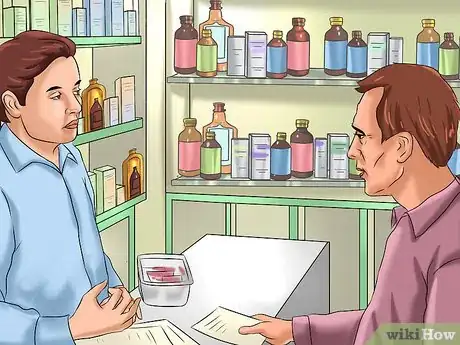






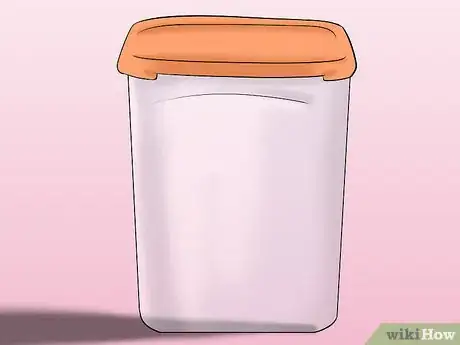

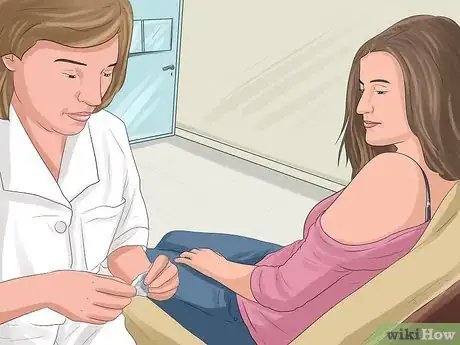

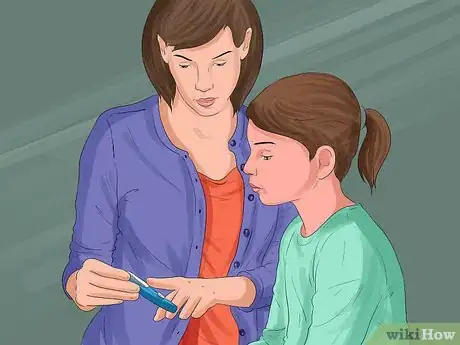
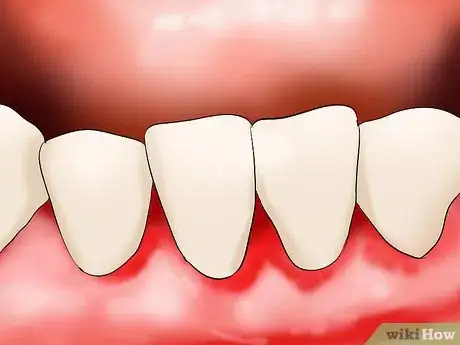
-Step-3-Version-2.webp)
